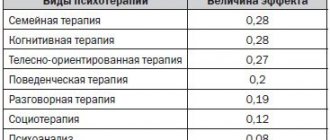Every person’s mood can suddenly deteriorate: due to bad news, an offensive word, or poor health. Someone is trying to hide it from others. Others go to share the problem with their best friend. Still others go for their favorite ice cream to get positive emotions. But there are also those who experience alternating bursts of joy and sadness several times a day. At the same time, they also do not know how to hide their feelings, so everyone around them knows about their unbridled joy and universal sadness. In psychology, for such character accentuation there is a separate concept - labile personality type.
general characteristics
What does a labile type of character accentuation mean? This is a psychotype, characterized by rapid and sharp mood swings against the background of a rich sensory sphere and social responsiveness.
Main features
The main feature is a quick, hardly predictable change in mood and emotions, which manifest themselves as clearly as possible. Such people do not know how to control them and hide them from others.
The labile personality type, which seems harmless at first glance, actually has a whole complex of negative traits that ruin the life of both him and the people around him:
- sharp, uncontrollable, sudden mood swings;
- short temper, irritability, conflict, attacks of aggression up to pugnacity;
- anxiety;
- lack of self-control;
- unpredictability, inadequacy;
- hysterical crying or laughing;
- attacks of apathy;
- jealousy, suspicion;
- poor memory, impaired concentration;
- sadness, despondency, which can lead to depression.
There are also positive features:
- sociability;
- good nature;
- sensitivity, responsiveness;
- devotion, affection;
- sincerity;
- deep feelings;
- well developed intuition.
The “weak link” of a labile person (something that can not only spoil his mood, but also break him psychologically, cause psychological trauma, and lead him to a state of depression):
- emotional abandonment of people significant to them;
- loss of loved ones;
- separation from loved ones.
Conflict situations are those factors due to which labile people’s mood most often deteriorates:
- competition;
- infringement of self-esteem;
- disharmony with others (everyone is good, but he is bad);
- lack of recognition, success, attention;
- fear of punishment;
- criticism.
Briefly, this psychotype can be described as follows. Such people are rarely in a calm state. Every event can throw them off balance. His mood soars (because they smiled at him, he was praised, the sun came out, he passed the project, etc.), and then he sings, dances, and tells jokes to everyone. Then it drops sharply (because the boss looked askance, his head hurt, he made a mistake in the papers, it started to rain, etc.), and then he throws things, cries, refuses to communicate with everyone. And this happens several times a day.
Appearance
The appearance that people with a labile personality type have is distinguished by special features that make them stand out in the crowd:
- an attentive and penetrating gaze, concentrated on one point;
- elongated nose;
- high growth;
- stooped posture;
- jerky, angular movements;
- unsure gait;
- constantly twirls something in his hands;
- conservative style of clothing.
The labile personality type according to Lichko in socionics is an intuitive-logical extrovert (Don Quixote psychotype). And according to Leonhard, the labile type is called somewhat differently - affective.
Society
In society, people with a labile type of character accentuation easily get along with everyone. Thanks to highly developed empathy - the ability to feel well the mood of others - such people develop intuition that allows them to accurately understand how others treat them.
Also, labilely unstable traits evoke sympathy due to good stable self-esteem. They are well aware of existing shortcomings, which disarms those around them. Moreover, they feel great gratitude towards those who help them get through periods of bad mood. Therefore, those around you who calmed a sobbing representative with labile features will not have the impression that they were used as a vest for tears. On the contrary, they will feel strong and noble.
Relationships with colleagues of labile people develop well, but a lot depends on how correctly a person chooses a profession. Work will be easy and pleasant if the activity is not associated with a clear algorithm of actions. Creativity or art will allow a person with labile traits to successfully fit into a team and achieve professional success.
Compatibility
In order to build the right relationships with others, it is useful for a person with a labile personality type to know his compatibility with other character accentuations:
- + labile = identity, mutual understanding, mutual assistance, support, harmonious relationships;
- + hyperthymic-unstable = personality types that complement each other; relationships optimal for friendship and marriage;
- + hyperthymic = pulsating relationships: sometimes easy and relaxed, sometimes boring and annoying, so these types need to take a break from each other from time to time;
- + psychasthenic = mirror relationships, but the mirror turns out to be distorted: one corrects the other without delving into the essence of his behavior - this leads to misunderstandings and claims;
- + hysterical = patronage relationship (on the part of the labile type) without feedback;
- + schizoid = the auditor (labile type) constantly finds fault with the sub-auditor (schizoid), tries to teach him and re-educate him;
- + cycloid = average degree of comfort in a relationship, when you have nothing against your partner, but you don’t feel any particular sympathy for him;
- + comfortable-hyperthymic = relaxation relationship: with such a partner it’s nice to relax and discuss extraneous topics, but you definitely won’t do business with him.
This information will help you build the right relationships with others - friends, colleagues, loved ones and family.
Health
The statement that all diseases are caused by nerves is not an absolute truth, but an entrenched myth. But the emotional state does have a somatic reflection. That is why stress is included in the list of provoking factors for many diseases.
Representatives of the labile personality type often suffer from infections: sore throat, pneumonia, cystitis. They are often diagnosed with VSD - vegetative-vascular dystonia. However, serious illnesses are extremely rare.
The relationship between character type and physical health is conditional. There are many factors for the occurrence of diseases, but other things being equal, people with a labile personality type more often suffer from vegetative imbalance and a periodic decrease in the body’s defenses.
Types of labile accentuation
Labile-hysterical:
- distorted self-esteem;
- dependence on the opinions of others;
- an irrepressible fantasy in which such individuals will invariably see themselves as a hero and winner.
Labile-affective:
- outbursts of excitability without targeted aggression towards others;
- frequent changes not only in mood, but also in interests;
- lack of concentration, due to which study and work suffer;
- distorted self-esteem makes it difficult to communicate with society.
Emotionally labile type (labile-sensitive):
- excessive expression of emotions;
- unexpected actions dictated by emotions that violate norms of behavior;
- grievances manifest themselves in hysterical laughter, joy - in a river of tears.
Labile-conformal:
- difficult to cope with your emotions;
- inability to criticize either one’s own actions or those of others;
- difficulties in adapting to new conditions.
Highlighting
There is also a labile-cycloid subtype. Its distinctive feature is its cyclical, rather than chaotic, mood changes. Many subtypes represent ordinary character accentuations. However, there are also those who are on the verge of psychopathology. Under the influence of conflict situations and traumatic factors, they can become mental disorders. These include labile-affective, labile-sensitive and labile-hysterical.
Emotionally labile type
In emotionally labile adolescents, affective suicidal behavior is characterized by rapid decision-making and fairly rapid execution. The main motive is not so much the desire to die as “to do something with oneself.” The possibility of death, however, is not allowed.
Another factor may be the desire to “forget” - euphoric drugs are preferred.
Emotional rejection from loved ones and significant others is a heavy blow for them and pushes them towards self-destructive behavior. Experiences are not shared with others.
Reasons for formation
Like all other character accentuations, the labile personality type is innate. However, there are factors that can aggravate its manifestations. These include:
- choleric type character;
- peculiarities of upbringing (when the child was not taught to control his emotions or was simply spoiled);
- impaired functioning of the nervous system: neuroses, childhood psychotraumas, severe stressful situations, unpreparedness for global changes;
- physiology: traumatic brain injury, drug addiction, oncology, cardiovascular diseases.
To correct behavior with problems related to the central nervous system, you should consult a psychiatrist. If the issue is physiological, treat existing
Symptoms
Depending on age, the severity of symptoms may vary .
Diagnosis of the problem in childhood and adolescence , since often obvious signs of mental lability are mistakenly considered by parents and those closest to them as negative character traits.
In children
Young children with a similar problem constantly require increased attention.
If they don’t receive it, they respond in the form of hysterics.
Severe emotional lability can lead to nervous exhaustion, which will only worsen symptoms.
Parents need to pay attention to the following behavior patterns::
- increased impressionability;
- dependence on the opinions of peers;
- overdeveloped imagination;
- constant change of interests;
- constant change of opinion;
- low level of perseverance.
In teenagers
In adolescence, diagnosis is complicated by additional circumstances in the form of hormonal changes and difficulties with socialization.
The boundaries of the mental norm in this age category are quite blurred, and it is not always easy to distinguish pathology from typical teenage behavior. The following symptoms are characteristic:
- low level of self-control;
- impulsiveness;
- inability to think about the consequences of actions;
- often sad mood;
- unexpected outbursts of anger;
- constant irritation, hostility towards others;
- tendency to violence.
In adults
Quite often, over time, pathological manifestations weaken and by adulthood the individual’s psyche returns to a normal state .
But the disease can also worsen in the absence of timely diagnosis and treatment, as well as in the presence of external negative influences.
The main manifestations of mental lability in adults:
- frequent mood changes;
- irritability;
- aggressiveness;
- excitability;
- impressionability;
- excessive enthusiasm.
Diagnostics
Want to know if you are a labile personality type? Take the test and calculate your results.
If the test results score from 0 to 10, you are far from being a labile type in terms of displaying emotions and mood swings. Those who get from 11 to 20 points are sometimes similar to similar people, since they do not always cope with the feelings that overwhelm them, but this happens extremely rarely. The range from 21 to 25 points indicates a borderline, very close stage to this character accentuation. Its brightest representatives are those who scored more than 26 points.
Basic Concepts
Lability manifests itself at the mental, mental and emotional levels .
What is lability of thinking?
A distinctive feature of such mental activity is the constant jumping from one idea to another.
A person does not yet have time to fully develop one topic before he immediately moves on to a new one. As a result, he is unable to concentrate on any specific issue.
Any superficial impression stimulates the development of his thoughts in a given direction . As a result, he talks continuously, without observing any logical chain between his phrases. Often there is causeless laughter that has no objective basis.
Mental lability is characterized by increased impressionability and emotionality. Mental processes occur at high speed. A person demonstrates an unstable emotional state, his mood is constantly changing.
Labile psyche is often found in people of creative professions, actors, musicians, artists.
Their creative activity is possible only in the presence of deep experiences and impressions, so they unconsciously demonstrate increased mental activity in order to stimulate their emotions.
People with a similar temperament are very touchy and whiny.
At the same time, due to rapid mood changes, they are not able to remain in a depressed state for a long time, which is a definite advantage.
If we consider the main types of temperament , then individuals with a labile psyche are classified as typical choleric people.
Emotional lability syndrome , what does it mean? With a pronounced syndrome, the instability of the emotional state is expressed in a constant change of mood. This can cause a person some discomfort.
Constant transitions from a depressed to a joyful mood take up a lot of energy, which leads to physical and emotional exhaustion.
Problems also arise in the area of interpersonal relationships. People around them are wary of individuals who demonstrate such atypical behavior.
Non-standard, critical situations that have a negative impact on a person and aggravate his emotional state pose a great risk.
Features of communication
People with the described accentuation have many difficulties in communicating with others.
What are they like in love:
- capable of deep, true feeling;
- faithful and devoted;
- they are not sure about the person who is nearby: when they are in a good mood, he is ideal for them; when it’s bad, it’s unnecessary ballast;
- a prolonged period of flirting;
- for them, the family is a refuge for restoring internal balance;
- the spouse is perceived as a friend and ally;
- sex is the last thing they are interested in;
- are having a hard time with the breakup - it can take years to recover.
Those who are in a relationship with such a psychotype must be patient in order to endure the minute-by-minute outbursts of tears and joy. Even in a friend, they most often look for a psychotherapist to share their sorrows. But at the same time they are distinguished by their devotion and are always ready to help.
They are quite responsible at work and always bring projects to completion. They treat their colleagues evenly; intrigue is not their strong point. They never set anyone up, they help out if necessary. However, career advancement is hampered by temperament and restlessness. In those moments when they cannot contain their emotions, they are capable of being insolent to their boss, tearing up important papers, and disrupting a meeting.
How to behave with a labile psychotype:
- Don’t take their mood changes personally;
- find a business that will captivate both parties;
- during times of distress, console and support;
- constantly encourage, praise even for the smallest achievements;
- ask every time about the reasons for the bad mood, and convince that it is not worth worrying about;
- never use aggressive methods of influence;
- avoid conflicts by any means.
Cyclothymia: symptoms, signs and diagnosis
Cyclothymia, or in the old cycloid (cyclothymic) character, is an alternation of ups and downs of mental and physical activity of varying intensity. The person experiences difficulties, but continues to work and socialize, in contrast to the severe mood swings (from deep depression to mania, euphoria) that are characteristic of bipolar affective disorder.
Rising period:
- increasing labor efficiency;
- acquiring new and updating old interests;
- state of inspiration and complete well-being;
- reducing night sleep to 5–6 hours.
Period of decline:
- habitual activities may not objectively suffer, but require greater volitional effort;
- narrowing of motivation, which is often interpreted by the patient and others as laziness;
- low mood, loss of strength, drowsiness;
- a feeling of vague malaise from various organs.
Thus, when talking about cyclothymia, symptoms are divided into two groups, but their totality and the predominance of rise or fall, as well as the patterns of their alternation, are always assessed.
Symptoms always correspond to periods, but periods can occur in different orders and at different time intervals.
Considering the subjectivity of most symptoms, their diversity, inconspicuousness, and also their duration, the disorder requires an objective diagnosis from a psychotherapist.
To diagnose cyclothymia you need to:
- Clinical and anamnestic examination is an assessment of the patient’s symptoms and life events (developmental conditions, injuries, stress and overload, infectious and endocrinological diseases) by a psychotherapist.
- Pathopsychological examination - performed by a clinical psychologist; the specialist evaluates personal characteristics (attitudes, motivation) and cognitive functions (thinking, attention, memory).
- Laboratory and instrumental methods - for differential diagnosis with organic and endogenous pathology; use the Neurophysiological test system, Neurotest, EEG.
- Consultations of candidates, doctors of science, councils of several specialists are indicated when the disease is difficult to treat and the diagnosis is in doubt.
Correction
Recommendations from psychologists on how to work on yourself are as follows:
- Give up self-criticism so as not to once again cultivate feelings of guilt. Learn to respect yourself.
- Take responsibility for your actions.
- In the evening, make yourself a plan for the whole next day and strictly follow it point by point.
- To control emotions, you need to subjugate your body. To this end, take up dancing, exercise, and sports.
- Learn to track the causes of mood deterioration and, if possible, avoid them.
You can take up psychotraining and perform several exercises on your own.
- Exercise "Analyst"
Imagine yourself as an analyst who always analyzes everything. Your task is to pick apart the factors that contribute to the deterioration of your mood. As soon as you feel that irritation or apathy is overwhelming you, start thinking about why this happened. Try not to miss a single little thing: maybe someone said something, elbowed you, didn’t call, etc. Think about why this upset you so much. Record your findings in a separate notebook. Make notes every time you get nervous. After a couple of weeks, re-read the results of your analytical work. Summarize what most often drives you crazy. Try to avoid these factors.
- Exercise “Getting into the Role”
Choose any positive role for yourself in the evening and try to get used to it as much as possible, starting in the morning, throughout the day. You do not have the right to deviate even one step from the designated character, no matter how much you would like to do so. For example, if you decide to be phlegmatic, you need to be calm and balanced, despite mood swings.
- Exercise "Alternative"
Your task is to learn to catch those moments when your mood begins to change for the worse. As soon as this happens, find an alternative activity that will help you release irritation and anger and give you moments of happiness and peace. For example, go for a walk in the park. Or eat ice cream. Or do some breathing exercises. Everyone will have their own method. The main thing is to learn to take control of emotions and promptly replace them with a worthy alternative.
If a person understands that he is not able to cope with emotions on his own, there is no need to hesitate to turn to psychotherapy, which has its own methods of working with such character accentuations:
- drug therapy: antidepressants, sedatives;
- psychotrainings aimed at improving concentration, family relationships and social contacts, and relieving emotional stress;
- treatment of somatic diseases;
- a strict daily routine with meals and walks in the fresh air by the hour and proper sleep;
- balanced diet;
- massotherapy;
- exercise therapy;
- hypnosis.
Despite the duration of the psychotherapeutic course of correction, the prognosis is usually favorable.
Symptoms and consequences
People suffering from this organic disorder are quick-tempered, angry, and even for minor reasons they experience violent outbursts of emotions. Their loved ones irritate them, and troubles are perceived literally like this: “everything is lost.” The mood changes abruptly and dramatically, like the weather in spring. Negative reactions arise spontaneously and cannot be adjusted.
Patients are touchy, prone to sentimentality, and tearful. Asthenia is manifested by weakness, rapid fatigue - even 2-3 hours of work is enough for them to get tired. Then complete powerlessness sets in, requiring serious rest.
Such people experience frequent headaches, even dizziness. Typically, such sensations occur when weather conditions change. They cannot tolerate a lack of oxygen and stuffiness, so it is difficult for them to travel on public transport. Sunlight hurts the eyes, normal sounds are perceived as very loud, even a slight touch causes pain.
Children with psychoorganic syndrome may talk in their sleep or walk.
As the disease progresses, problems with emotions, thinking and memory become more severe. The patient, talking about something, is distracted from the main thread of the story, going into insignificant, insignificant details. His thoughts become viscous, he often repeats the same phrases, his vocabulary becomes impoverished, and rhymes slip through his everyday speech.
The individual completes the assigned task slowly, since his mental processes proceed inertly. He remembers recent events poorly, not to mention those that happened long ago.
Critical abilities are impaired, and, although the patient understands the line between good and bad, he may speak tactlessly or commit an unacceptable action.
Character deteriorates, and what a person previously tried not to demonstrate, considering it a bad trait, comes out. He becomes boastful, sticks out his merits, exaggerating and pathetically praising them. Such euphoria abruptly turns into gloom, melancholy and suddenly - an affective outburst over a small matter. At this moment, the patient loses self-control, his consciousness narrows and focuses on the immediate task - to immediately punish the one who offended him, even if nothing of the kind actually happened. And then a tragedy may occur: he will commit a crime, maybe even kill.
As the disorder progresses, it leads to negative personality changes, namely social maladjustment. Relationships with loved ones deteriorate, difficulties arise in school and work. Professional performance deteriorates so much that it leads to dismissal.
Neurological disorders are added to psychoorganic disorders. These may be seizures or nocturnal diuresis (paroxysms).
To escape from problems, patients begin to drink alcohol and take drugs. This, in turn, leads to delirium tremens and amnesia, increasing the risk of increased criminal behavior and death.
The main feature of the disorder: loss of control over aggressiveness, the outbreak of which occurs without any reason. The internal tension for such a surge can increase in a minute or several hours. After a momentary attack of rage, the patient moves away and repents of what happened, which distinguishes this disease from dissocial personality disorder.
All of the above clearly convinces that organic emotional labile asthenic disorder must begin to be treated in the early stages. This should be done jointly by a psychiatrist and a neurologist.
Very often, the patient himself and those around him attribute the above-mentioned behavior to bad character, without resorting to therapy and wasting time. An experienced specialist will make a diagnosis at the first appointment and prescribe treatment. The result of therapy is very favorable if the patient follows all the instructions and recommendations of the attending physician.
Examples of characters and famous personalities
Examples of famous people and characters with a labile personality type:
- Don Quixote is the main character of Miguel de Cervantes's novel The Cunning Hidalgo Don Quixote of La Mancha;
- Milla Jovovich is an American actress, model and fashion designer;
- Masyanya is the main character of the animated series of the same name, a broken girl with anarchist inclinations;
- Gromozeka is a character in books about Alice Selezneva by Kira Bulycheva and cartoons based on them (“The Secret of the Third Planet,” for example), a professor of archeology from the planet Chumarosa;
- Edward Norton - American actor, producer, director (main role in the film "The Incredible Hulk");
- Russell Crowe is an Australian and American actor and director (roles in the films “Gladiator”, “A Beautiful Mind”, “Les Miserables”);
- Olga Buzova is a Russian TV presenter, actress, singer, former participant and later host of the reality show “Dom-2” (“TNT”).











